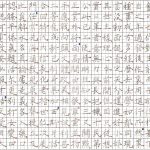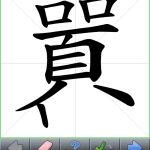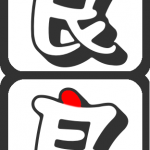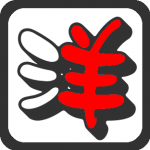Articles in the ‘Vocabulary’ category Page 12
-
Handwriting Chinese characters: The minimum requirements
This is a guide to handwriting Chinese characters. It’s not about writing beautifully, but writing correctly, including things like stroke placement, length and direction. There are numerous examples of handwritten characters (real examples, not typed characters) along with practical exercises to see if you have grasped the core ideas. The article goes somewhat beyond the bare minimum for beginners, but is certainly a must for anyone who cares about handwriting Chinese characters.
Read → -
Learn to read Chinese… with ease?
Can you learn to read Chinese with ease? ShaoLan, among others, claims that you can. However, these arguments involve a lot of cherry-picking and are mostly exaggerated.
Read → -
Three ways to improve the way you review Chinese characters
In this article, I discuss three things you can do to improve the way you review characters, mainly focusing on avoiding rote learning, time quality and making sure your study method really prepares you for what you want to use your Chinese for. The article also contains a video about how to improve your character reviewing with Skritter!
Read → -
Sensible character learning challenge 2014: Milestone #1
The first milestone in the 2014 sensible character learning challenge has now been reached! This is a good opportunity to join the challenge if you haven’t already, and if you have, it’s time to report how the first few weeks have gone. This article also contains information about prizes (character posters, free extensions and promo codes) for the first milestone, as well as my own reflections of my character learning.
Read → -
Sensible Chinese character learning challenge 2014
The 2014 sensible Chinese character learning challenge starts soon! This article introduces the challenge and how you join us. Apart from learning a lot of characters and improving the way you learn characters, you also get a discount and free extensions on Skritter, as well as a chance of winning character posters from Hanzi WallChart!
Read → -
Sensible Chinese character learning revisited
In a way, learning Chinese characters is very much like learning vocabulary in any foreign language and much of the efficient methods developed there works well for Chinese as well. However, characters are also fundamentally different from words in English and this influences how we should learn them as well. This article is a recap of how to learn Chinese characters in a sensible way. It is also a prologue for the upcoming character learning challenge.
Read → -
Flashcard overflow: About card models and review directions
The question of how to design flashcards is faced by all learners who use them. What should you put on the front? What should you put on the back? Should you add single characters or whole words? Or perhaps sentences are better? The general answer is that it depends and this article discusses some of the factors the answers depend on.
Read → -
Drills and exercises aren’t only for beginners
It’s commonplace to see workbooks used a lot in beginner courses, but the more advanced the students become, the less they are used. This is mostly for the better, but in this article, I argue that advanced students actually need more drilling than they (we) think. Being able to say or write what we want in one way isn’t enough, we need diversity and a bigger active vocabulary. Drilling is the only time-efficient way of achieving that.
Read → -
Phonetic components, part 2: Hacking Chinese characters
This is the second and final article about using phonetic components to hack Chinese characters and make it considerably easier to handle similarly looking characters. This article describes both the principles and gives plenty of examples that might resolve some of your current problems for you.
Read → -
Phonetic components, part 1: The key to 80% of all Chinese characters
At least 80% of all Chinese characters are made up of one semantic component (meaning) and one phonetic component (pronunciation). The sheer number of characters formed this way means that these characters ought to be taught properly, yet I think this topic is largely glossed over. This is the first article of two dealing with phonetic components and how they can help you learn Chinese better.
Read →






